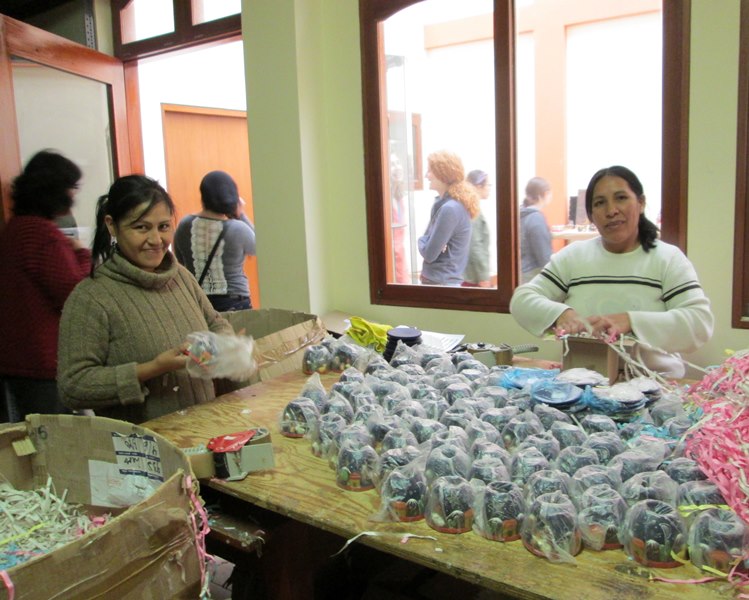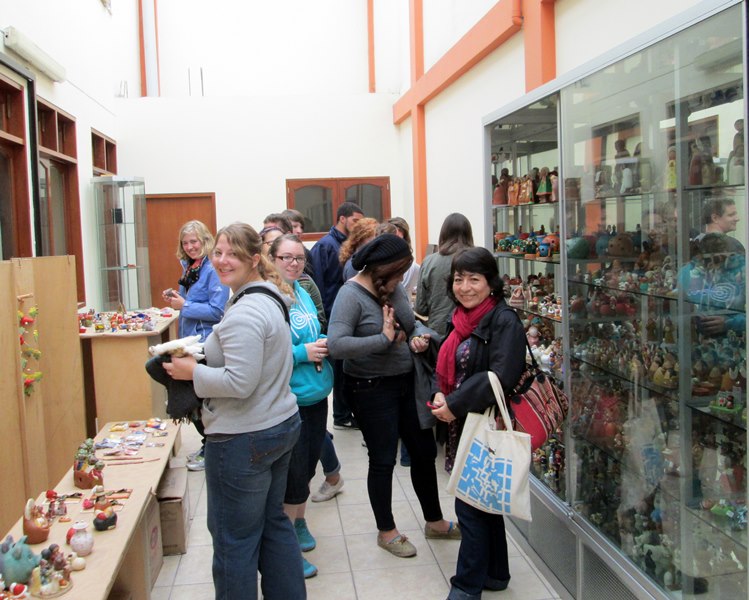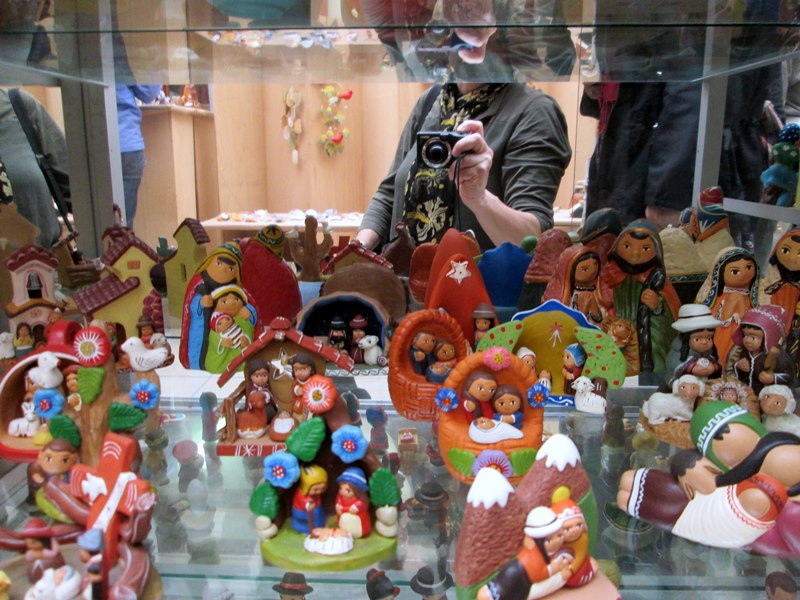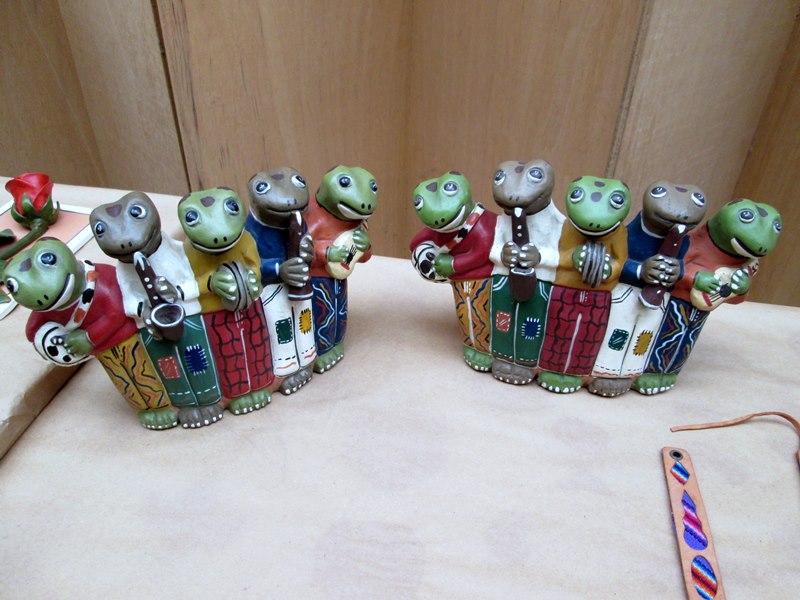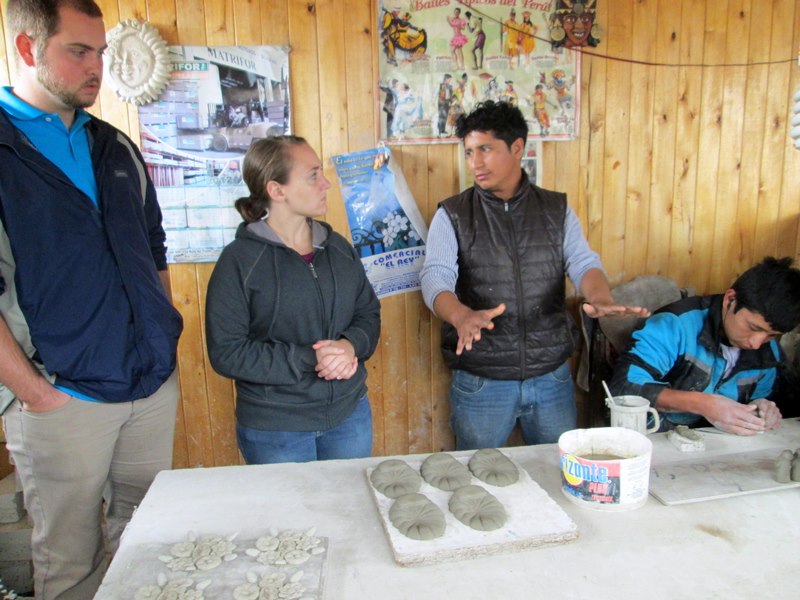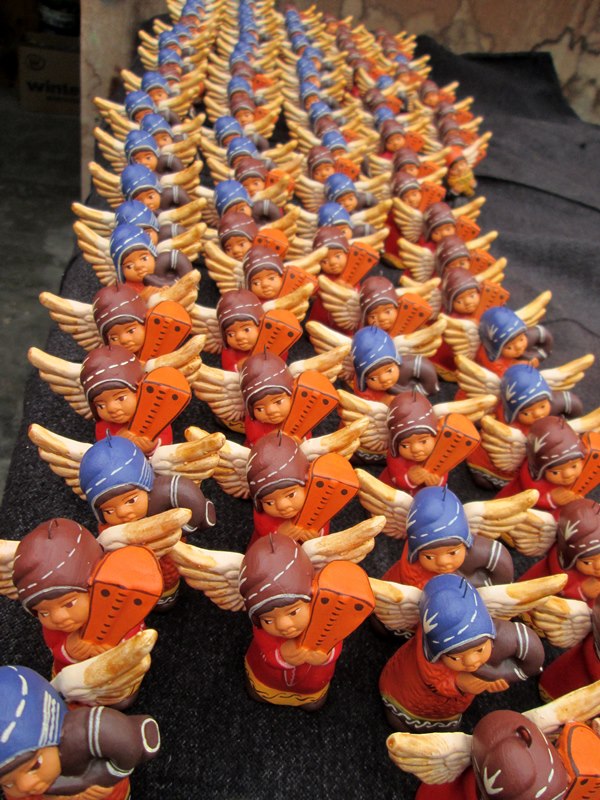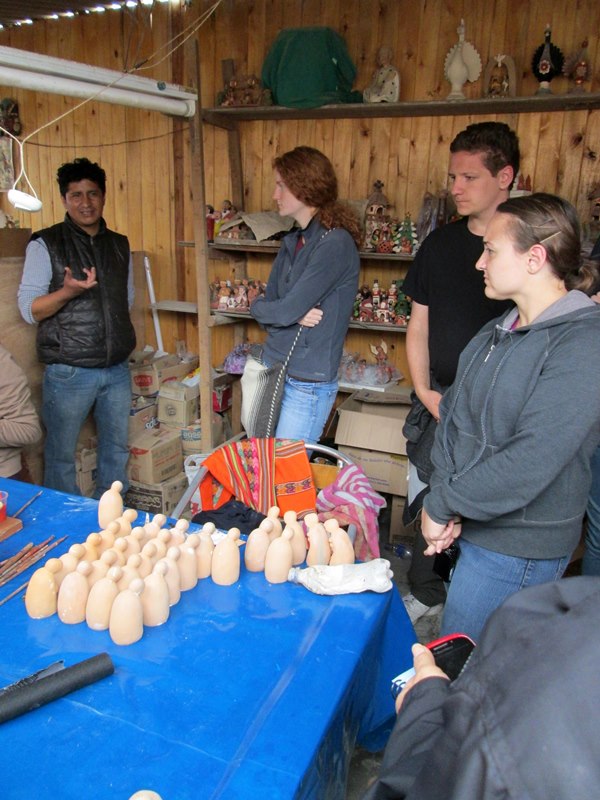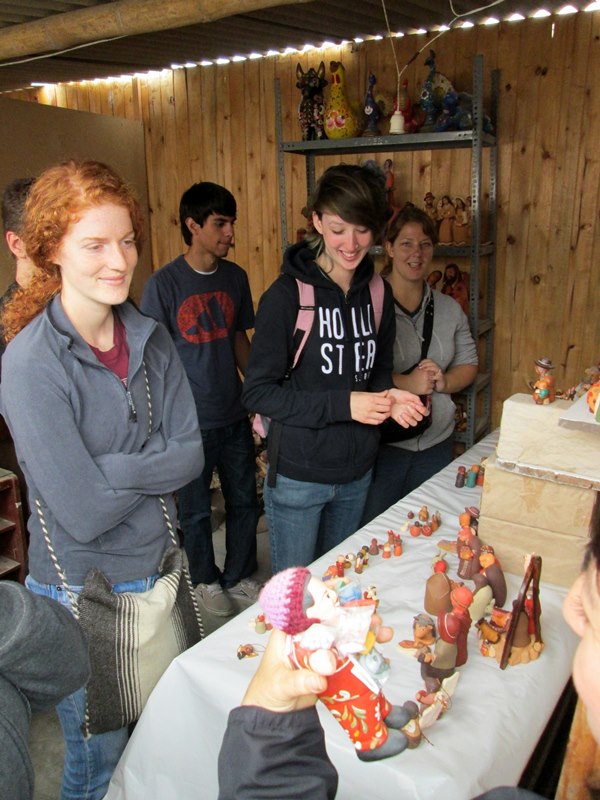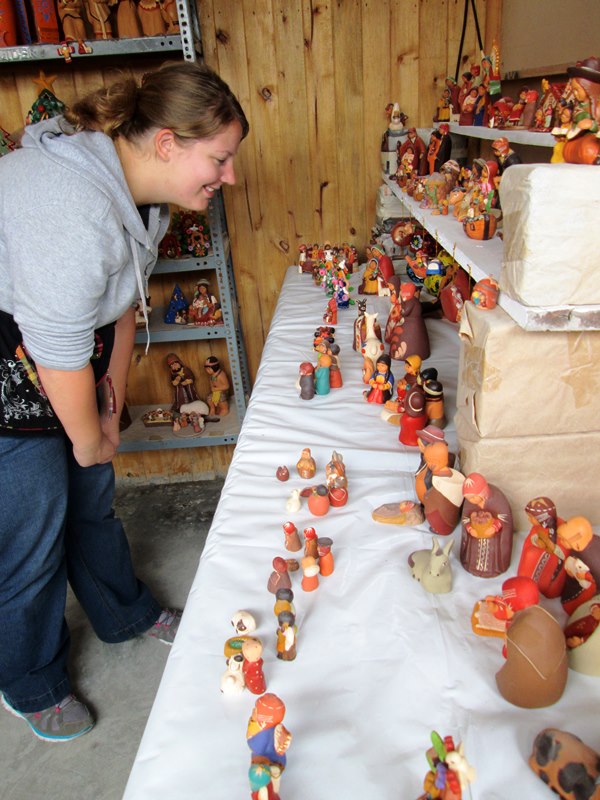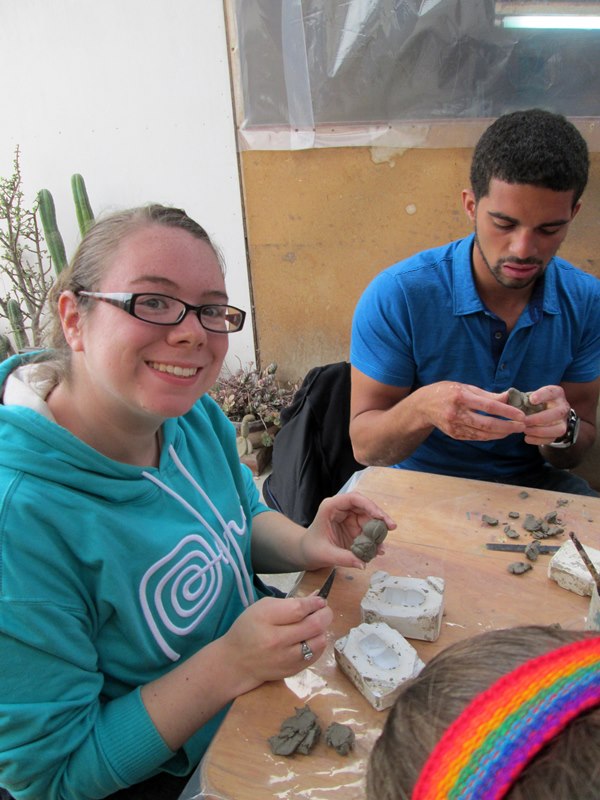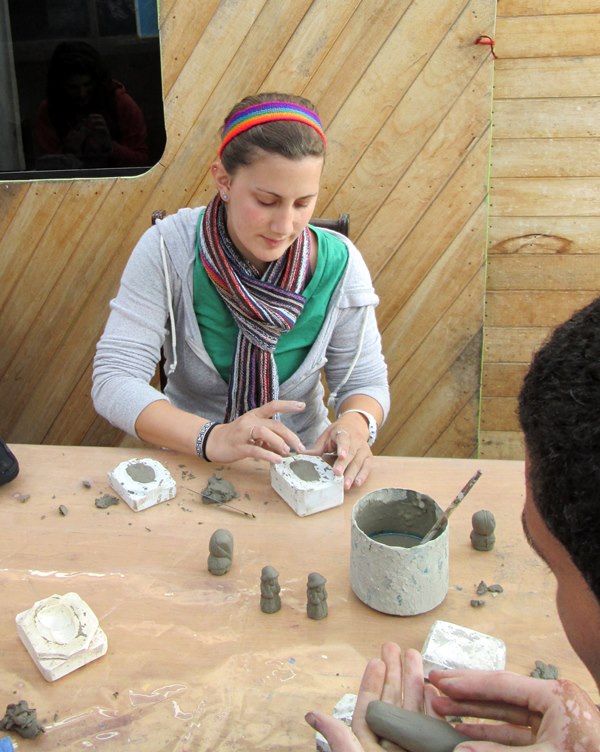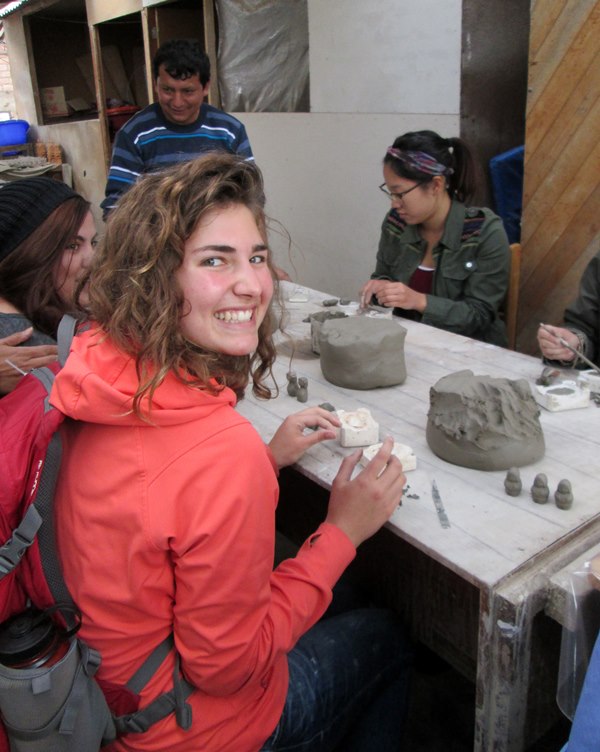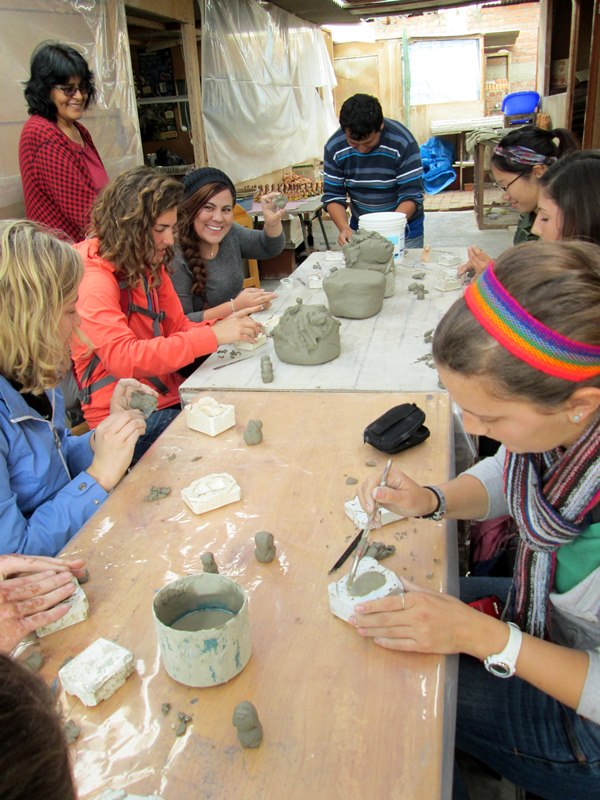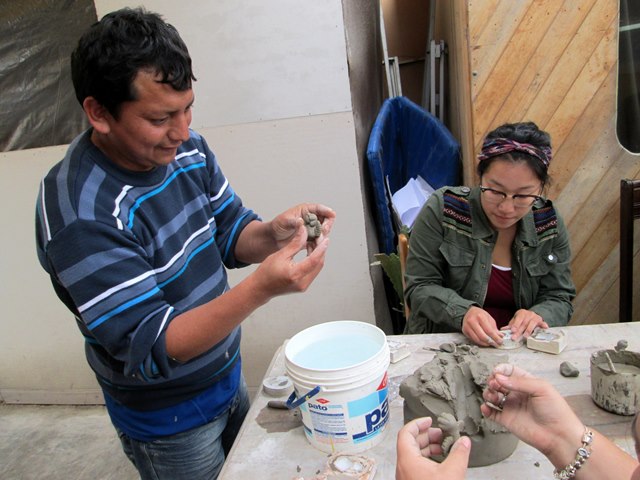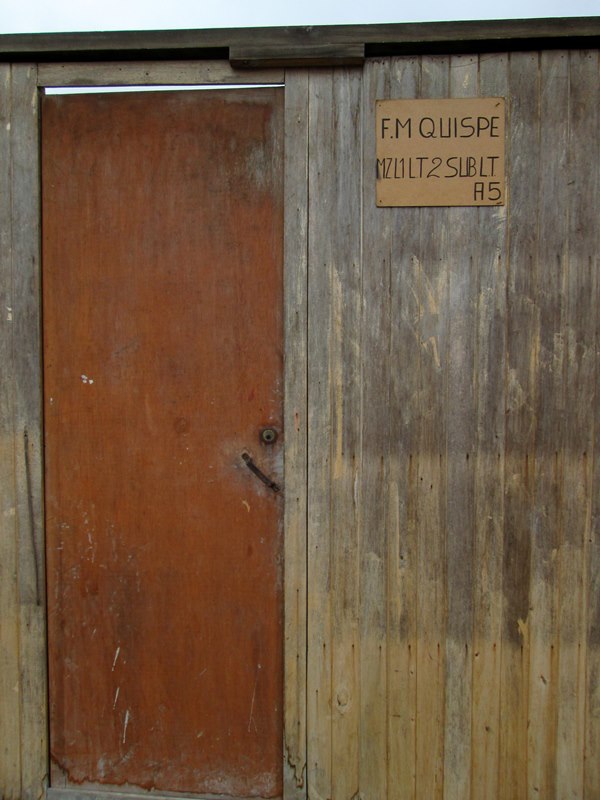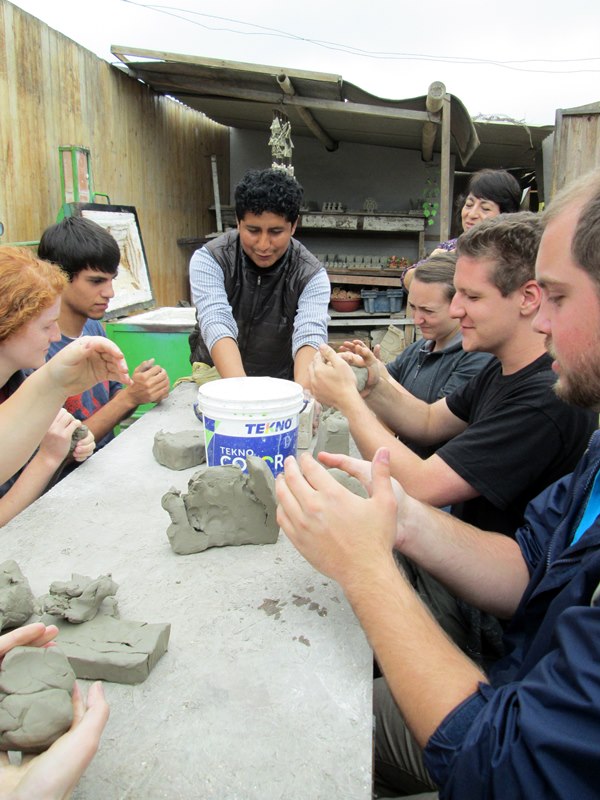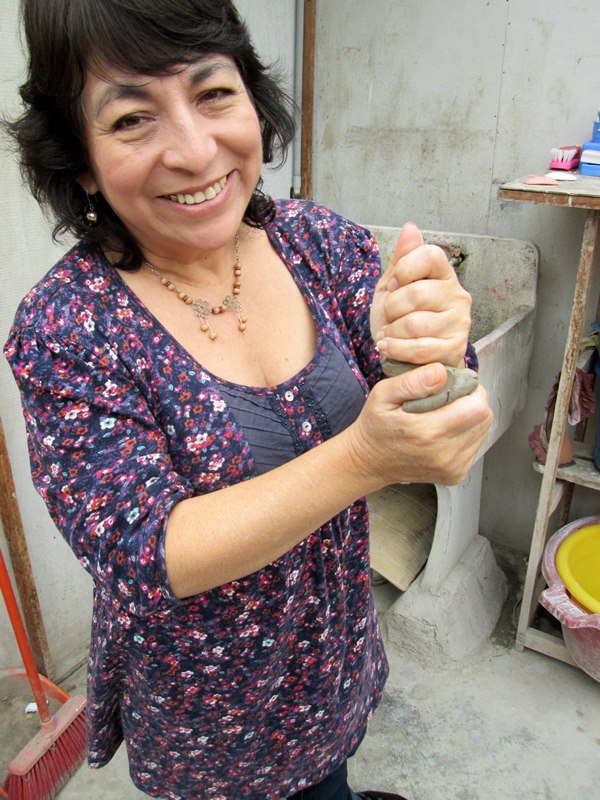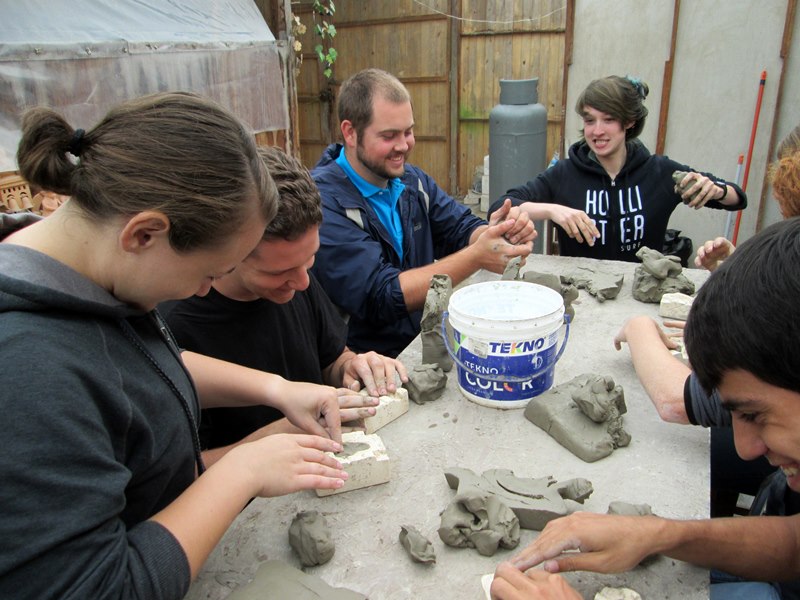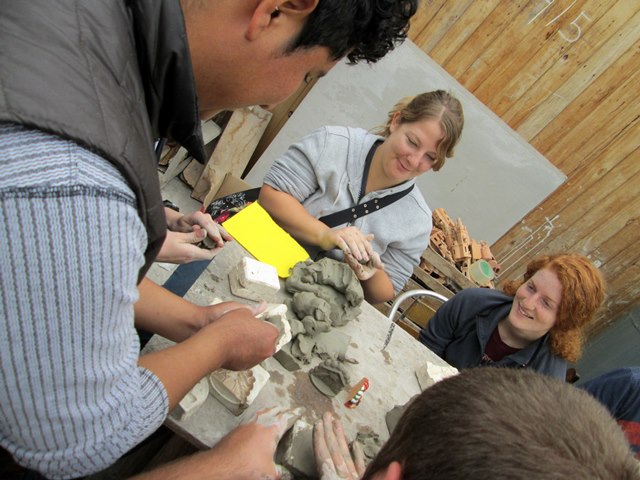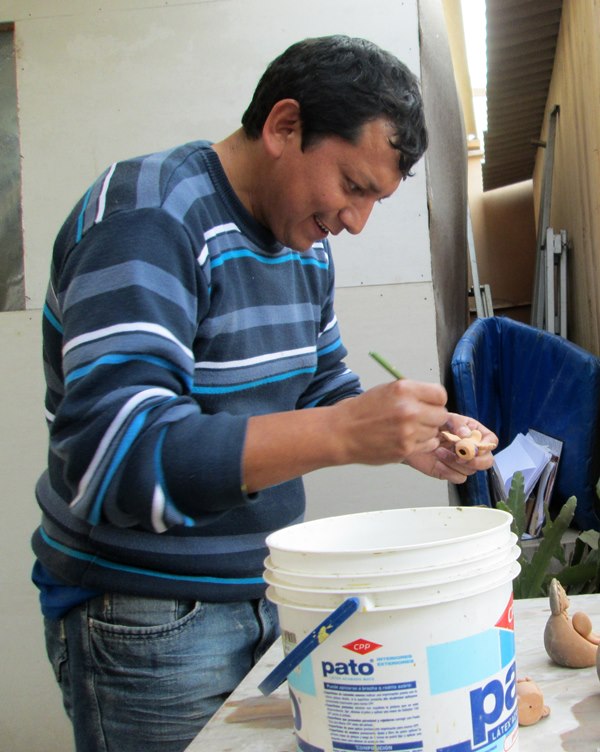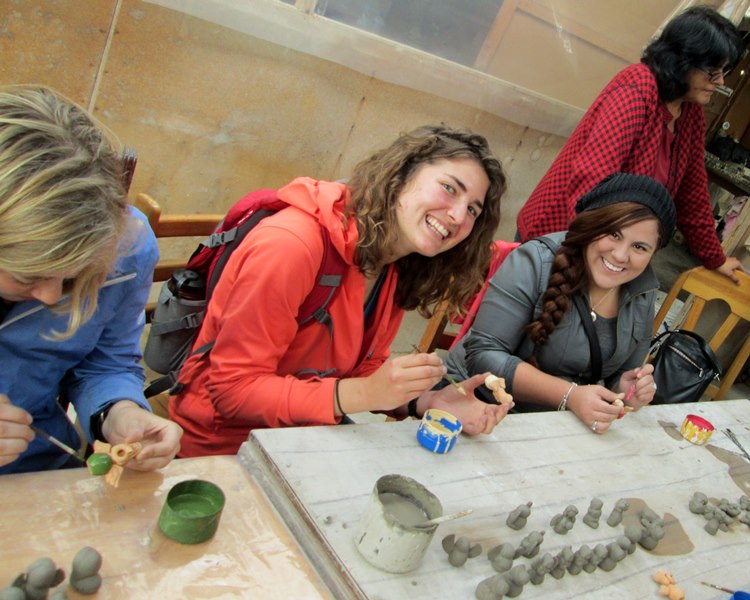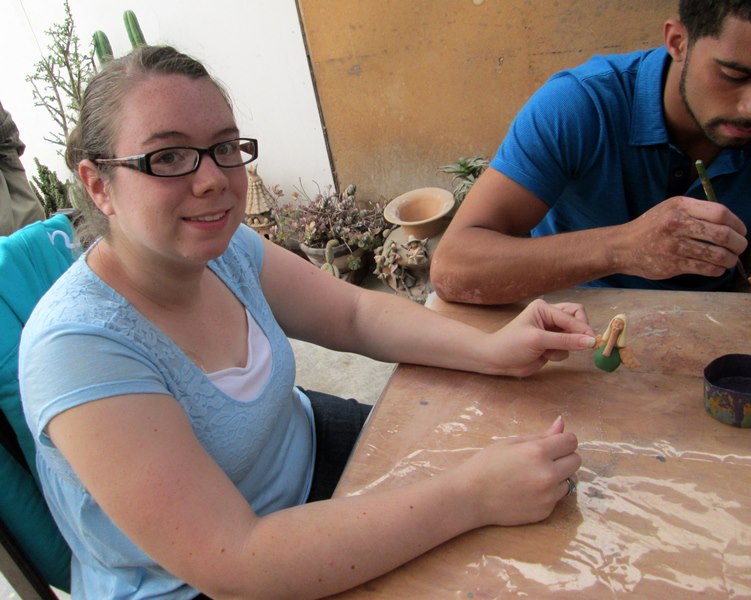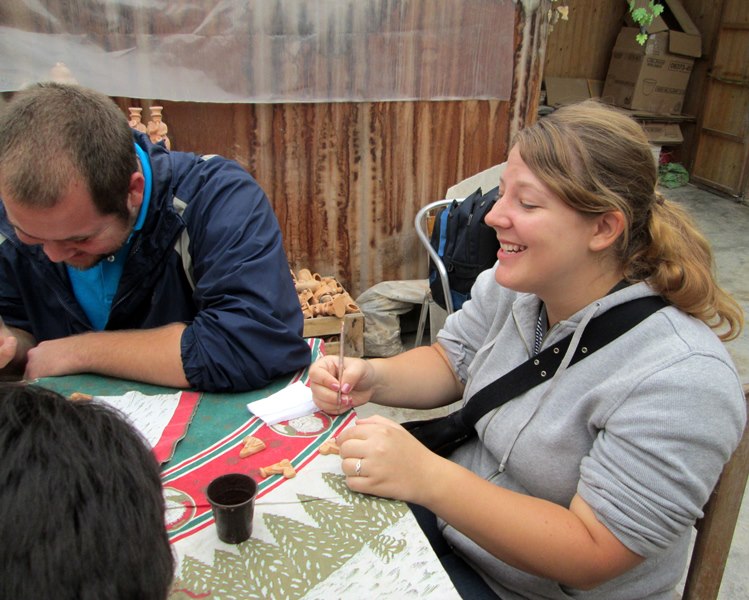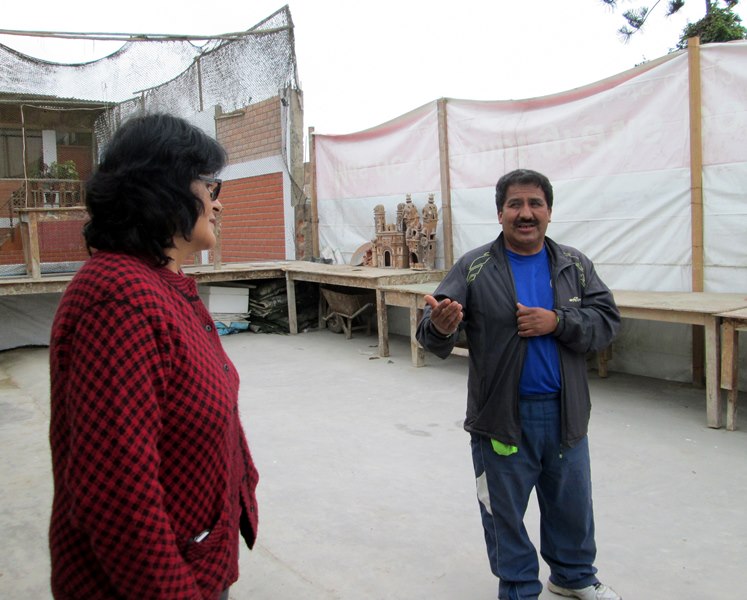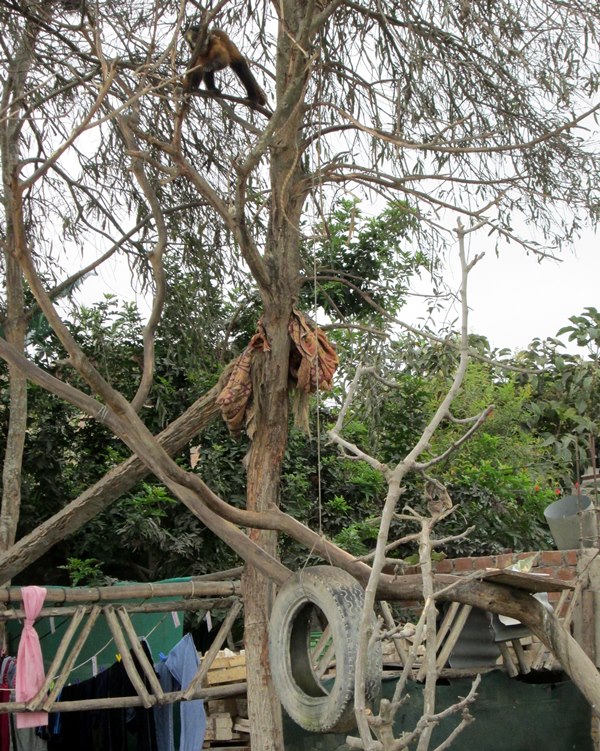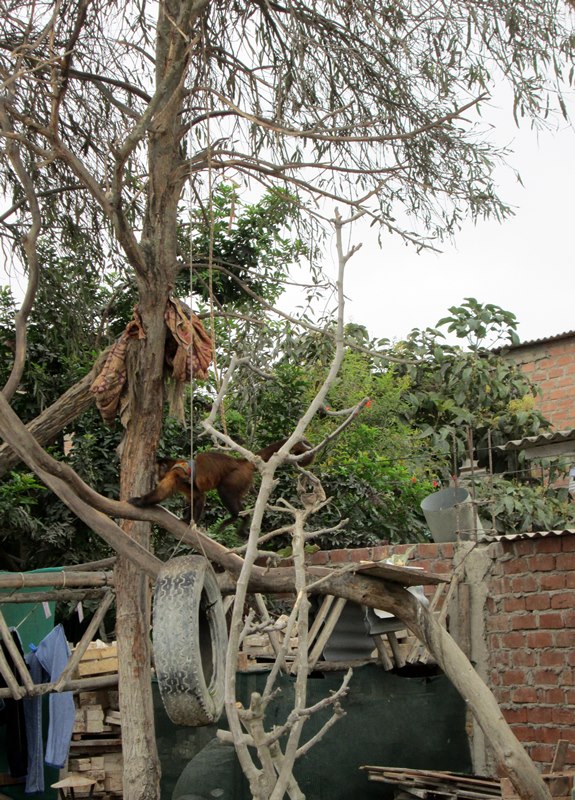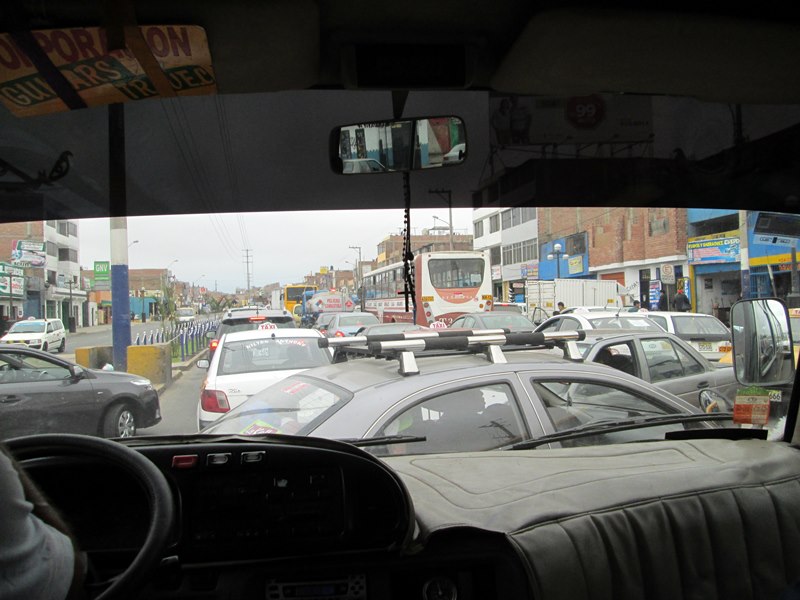Tracking Fair Trade Crafts to the Source: Where Clay Meets Mold in Chorrillos
A 10-minute walk from Casa Goshen, the home office of the SST program in Peru, we found Manos Amigas, a Christian organization that exports handicrafts on behalf of independent artists, advocating for fair prices and tracking shifts in consumer demand for crafts.
Yannina Meza, who directs Manos Amigas, or “Hands of Friendship,” met us at the door. She told us that Manos Amigas works with dozens of artisan groups and workshops in Ayacucho, Cusco, Huancayo and elsewhere, whose knitted scarves and gloves, carved gourds, polished stone earrings and other products are shipped abroad.
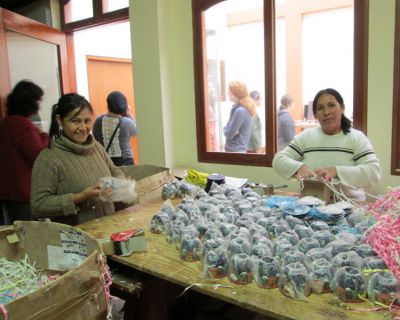
On the day that we visited, a couple of employees were packing up nativity scenes for shipment to one of the organization’s largest clients: Ten Thousand Villages, a fair trade retailer with shops in Goshen and Mishawaka, among many other locations. (Nativity scenes and other Christmas crafts are, year round, the most popular products for export).
We were closer to the source of fair trade crafts than most of us had ever been but Yannina wanted to take us even closer. Together we took a bus to Chorrillos, a waterfront district at the southern end of Lima. We turned on to dirt roads as we made our way to the workshops of two brothers who are master craftsmen, working in clay.
Edgar and Roberto Quispe both came to Lima from Ayacucho, the highland region in the Andes where the Shining Path emerged around 1980 and which remained at the center of the armed conflict over the next two decades.
They migrated to Lima in part to escape the terrorism and also to be closer to a market for their ceramics. The brothers create original molds of angels and other figures, which they give life too in shades of red, green, pink, blue, purple. They operate independent workshops, employing several artisan assistants.
They not only showed us how they did their work; they also brought out clay and molds and paints, letting us assume the role of visiting artists. We soon discovered that a process that looked effortless in their hands came with a steep learning curve. But no matter.
The student reviews of the day spent with Manos Amigas were positively glowing: “Awesome!” and “Love, love, love.” and “Woot. Woot. Amazing.”
Photos and captions by Karen Stoltzfus
